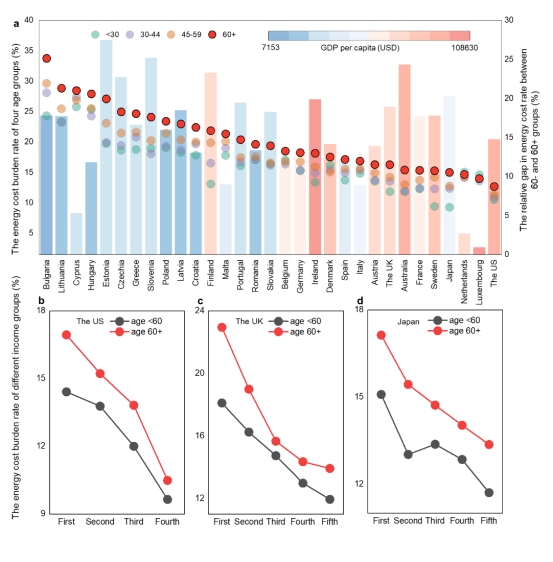The Institute for Blue and Green Development at Shandong University has made significant progress in understanding the burden of energy consumption costs on aging populations. The paper titled "Higher total energy costs strain elderly, especially low-income, across 31 developed countries" has been published in the journal Proceedings of the National Academy of Sciences of the United States (PNAS). Dr. Peipei Tian from the Institute for Blue and Green Development is the first author, Prof. Ning Zhang and Prof. Kuishuang Feng, also from the Institute for Blue and Green Development, along with Prof. Laixiang Sun from the University of Maryland, are co-corresponding authors. Other authors include Prof. Klaus Hubacek from the University of Groningen, Dr. Daniele Malerba from the German Development Institute, Prof. Heran Zheng from University College London, as well as Prof. Jiashuo Li, Prof. Honglin Zhong, and Dr. Dan Li from Shandong University.
Addressing the total energy cost burden of elderly people is essential for designing equitable and effective energy policies, especially in responding to energy crisis in an aging society. It is due to the double impact of energy price hikes on households-through direct impact on fuel bills and indirect impact on the prices of goods and services consumed. However, while examining the household energy cost burden of the elderly, their indirect energy consumption and associated cost burden remain poorly understood. This study quantifies and compares the direct and indirect energy footprints and associated total energy cost burdens for different age groups across 31 developed countries. It reveals that the elderly have larger per capita energy footprints, resulting from higher levels of both direct and indirect energy consumption compared with the younger age groups. More importantly, the elderly, especially the low-income elderly, have a higher total energy cost burden rate. As the share of elderly in the total population rapidly grows in these countries, the larger per capita energy footprint and associated cost burden rate of elderly people would make these aging countries more vulnerable in times of energy crises. It is therefore crucial to develop policies that aim to reduce energy consumption and costs, improve energy efficiency, and support low-income elderly populations. Such policies are necessary to reduce the vulnerability of these aging countries to the energy crisis.
Figures:

Figure 1: Per capita energy footprints and proportions across four age groups in 31 countries.

Figure 2: Total energy cost burden rates for different age and income groups in 2015.
Full article link:https://www.pnas.org/doi/10.1073/pnas.2306771121
